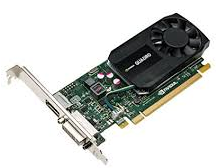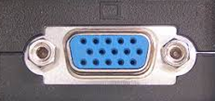|
LESSON
NOTE
|
|
MOTHERBOARD |
|
|
|
CPU
The
Central Processing Unit is a chip that is located directly on the motherboard. It
is covered by a heatsink or a fan that help stop the CPU from overheating. |
|
RAM RAM is connected directly on the motherboard. Each
stick of RAM is an elongated integrated circuit
board. Motherboards usually have a few RAM slots that are placed
side by side. |
|
|
|
HARD DRIVE
The hard drive is a small rectangular box often located
towards the front of the case. It is sometimes hidden by the
brackets that hold it in place. It can also be confused with CD-ROMs or old
floppy drives. One can distinguish
them from other drives by checking to see if they open at the front. |
VIDEO CARD
The video card is a circuit board that connects to the
motherboard and has a video port at the back of the computer. Some motherboards have a built-in video card called on-board
video. This can be verified by the presence of a monitor plug-in
at the back of the motherboard. |
|
VIDEO PORTS
There are
a few common video ports that you should know in order to help you identify a
video card.
|
VGA is an older video port that was
common until about 2014 on computers.
It was replaced by DVI and HDMI.
In their later years of production, the ports were a distinctive
blue. |
|
|
The DVI port became popular in the early
2000s but was replaced fairly quickly by HDMI. |
|
|
The HDMI port is the current port that
dominates the market. It is used in
monitor video as well as television video which is very convenient. |
|
|
This DisplayPort port is expected to
replace the HDMI port in the next few years (as of 2018). It is already an option on video cards. |
|
|
Instead of using the regular DisplayPort,
laptops are using the mini version of the port seen on the right. |
|









